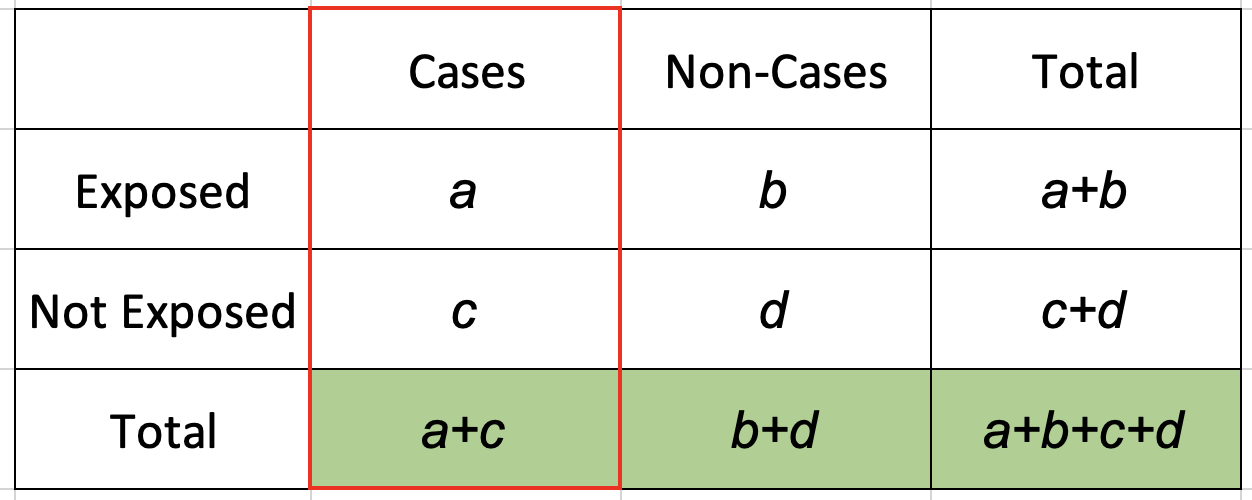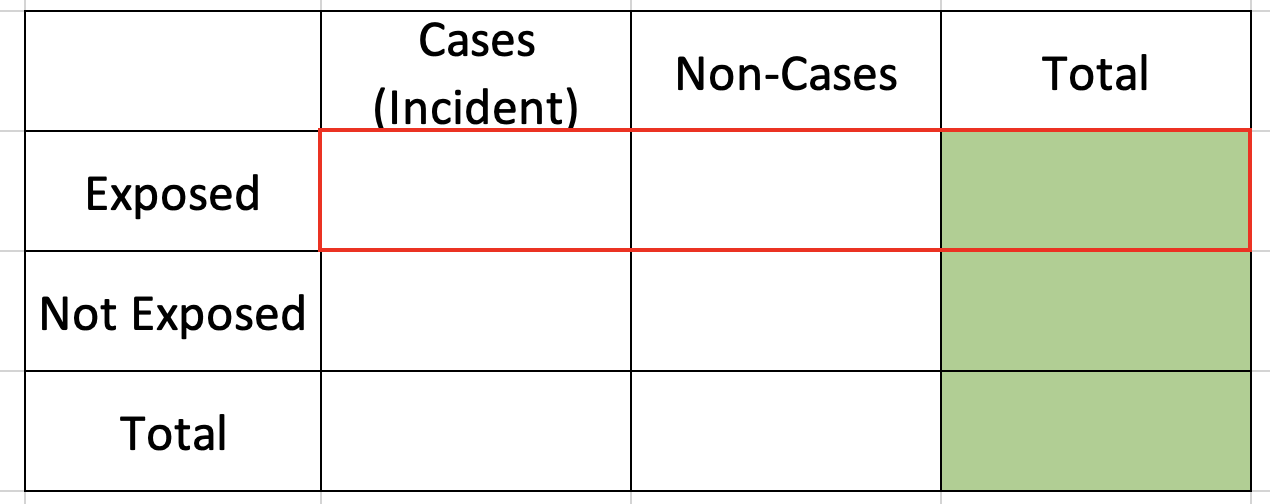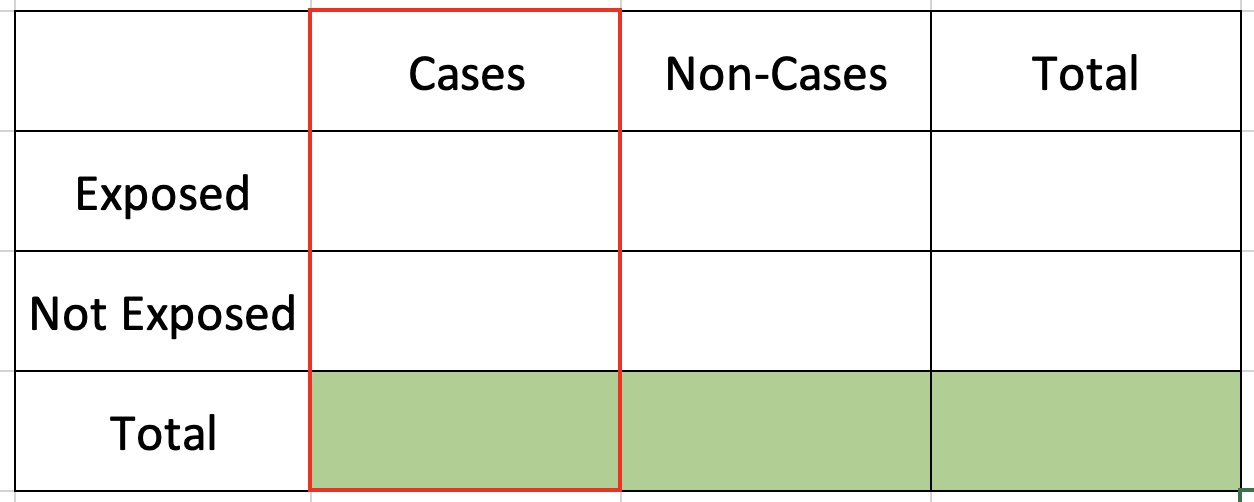Case Control Study
Dr Abhijit P Pakhare
All India Institute of Medical Sciences, Bhopal
Need of Case-Control study
Cohort study
Risk
Non-event to event
Temporality
Incidence
Relative risk
Attributable risk
When longitudinal follow up is not possible
Long latency period of chronic diseases
Smoking ~ CVD, Lung cancer
Diet & exercise ~ Osteoporosis
Disease incidence ~ relatively few
- but all to be followed
Very rare diseases- cohort way inefficient
Example-1: Atypical fractures
mid 2000s, ~ unusual form of femoral fracture in women
Bisphosphonates suspected because
newly introduced at that time
act by reducing bone remodeling.
Case series ~ bisphosphonates and atypical fractures,
other drugs
other diseases
Whether bisphosphonates were independently associated with atypical fractures?
Example-1: Atypical fractures
Example-1: Atypical fractures
Bisphonates use and atypical fractures of femoral shaft(Schilcher, Michaëlsson, and Aspenberg 2011)
- National Swedish Patient Register,
- all 59 women age 55 years or older with atypical femoral fractures in 2008
- 263 controls, women in the same registry who had had ordinary femoral fractures
- other variables - age, use of bone-modifying drugs (corticosteroids or estrogens), and diseases such as osteoporosis and previous fractures
- concluded women taking bisphosphonates were 33 times more likely to develop atypical fractures
Design of Case-Control Study
Flow of Case-Control Study
Control
Control in other situations
Experimental studies
- those who are not exposed to the intervention
Diagnostic laboratories
- Specimen which have known amount of what is being tested
Case-control study-
those who do not have disease or outcome
controls- take in account or subtract the effects of other variables
Selection of cases
Diagnosis - rigorously confirmed
All cases or representative sample from defined population
Hospital cases
Severity or atypical nature
Catchment area
Selection of controls
Validity- comparability of cases and controls
Cases and controls should be members of same base population
Random sample of non-cases
Methods of selection
Population approach
Cohort approach
Hospital & Community approach
Population approach
Random sample of defined population
Dynamic population
Cases and controls selected at similar calender time
Cohort approach
Cases and control sampled from same cohort
All cases and random sample from base cohort
- Case-cohort study
All cases and random sample at the time of incident case
- Nested Case-Control study
Why do case-control within cohort?
When variables not available in cohort base are to be studied
not collected at base
- not feasible to collect for all participants at baseline
- cost
additional biomarkers
genetic analysis
- time
missing information from records
additional questionnaire
Hospital and Community Controls
Hospital
Select comparable controls
Cases from hospital ward- controls from a different disease from same hospital
Hospitalized patients usually have different distribution compared to the rest of the population
Community
From catchment area of hospital
Neighborhood controls
Measurement of exposure
More than one control group
Community
Hospital
Another disease
Non-diseased - Caregivers
Odds ratios across groups
- Similar- less likelihood of bias
- Heterogeneous- Bias likely
Multiple controls per case
Different from multiple control groups
More than 1 control for a cases
Useful in case of very rare disease as cases will be few
To improve statistical power
Maximum up to 3 to 4 controls per case
Measurement of exposure
Complete & accurate records before development of disease
Can be done for prescriptions, medical records of investigations, procedures or done on stored samples
Behavioral exposures
Diet, exercise, substance use etc Disease status may influence recall
Exposure measurement methods and tools to be same for both cases and controls
Analysis of Case-Control Study
Comparisons
Cohort Study
We know totals of exposed and non-exposed since we only fix them
We estimate incidence in exposed & non-exposed and compare relative incidence
![]()
Case-Control Study
We know totals of Cases and Non-cases since we only fix them
We estimate exposure odds among cases & non-cases & compute ratio of two odds
![]()
Odds ratio
\(Odds\ of\ exposure\ in\ Cases = \frac{Number\ of\ exposed\ among\ Cases}{Number\ of\ non-exposed\ among\ Cases}\)
\(Odds\ of\ exposure\ in\ Cases = \frac{a}{c}\)
\(Odds\ of\ exposure\ in\ Non-Cases = \frac{Number\ of\ exposed\ among\ Non-Cases}{Number\ of\ non-exposed\ among\ Non-Cases}\)
\(Odds\ of\ exposure\ in\ Non-Cases = \frac{b}{c}\)
\(Odds\ ratio = \frac{Odds\ of\ exposure\ among\ Cases}{Odds\ of\ exposure\ among\ Non-Cases}\)
\(Odds\ ratio = \frac{ad}{bc}\)

Interpretation of Odds Ratio
Association of exposure and outcome
OR > 1 (more than one)
- Cases are more likely to be exposed than non-cases. Exposure may be a risk factor
OR < 1 (less than one)
- Cases are less likely to be exposed than non-cases. Exposure may be a protective factor
OR =1 (nearly one)
- Exposure variable is similarly distributed among Cases and Non-Cases
Example: Bisphosnates and Atypical Fracture
Outcome + Outcome - Total Prevalence * Odds
Exposed + 46 26 72 63.9 1.7692
Exposed - 13 237 250 5.2 0.0549
Total 59 263 322 18.3 0.2243
Point estimates and 95% CIs:
-------------------------------------------------------------------
Odds ratio 32.25 (15.44, 67.39)
Attrib fraction (est) in the exposed (%) 96.84 (93.16, 98.62)
Attrib fraction (est) in the population (%) 75.55 (60.42, 84.90)
-------------------------------------------------------------------
Uncorrected chi2 test that OR = 1: chi2(1) = 128.657 Pr>chi2 = <0.001
Fisher exact test that OR = 1: Pr>chi2 = <0.001
Wald confidence limits
CI: confidence interval
* Outcomes per 100 population units Issues in Case-Control Study
Selection of cases
Prevalent cases
- Associated factors for duration, survivors
Hospitals
Severity
Socio-economic position
Differential selection probability
Selection of controls
Hospital
- Distinct distribution of variables than population
Household / Best friend
- Over-matching
Population
- Non-response
Measurement of exposure
Poor or limited recall
- Past exposures not remembered well hence not reported
- Non-differential misclassification
Differential recall
Diseased or cases easily identify with exposure than non-cases
Differential misclassification
Sources of presentation
Chapter-6 Risk: From disease to exposure (Fletcher, Fletcher, and Msc 2013)
Chapter- 7 & 9 : Observational studies (Celentano and Szklo 2018)
Thank You
References

Study Designs Workshop @ AIIMS Bhopal

